Much has been written about British atrocities in India, and while that cannot be denied, it would be unfair to decry the legacy of the British rule in India as totally void of any good. Apart from the English language, which I think is Britain’s greatest gift especially needed in a country with so many different languages; the British introduced formal education in India. Those early schools set up by British missionaries in India benefitted multiple generations and even today serve admirably. Even if developed for selfish interests, the Indian rail network was also built by the British. That India has not modernized it yet despite obtaining freedom in 1947 cannot be blamed on the British. The British also introduced much of the administrative systems including the postal system first started in Kolkata by Warren Hastings in 1774.
But apart from the inevitable arguments on the good and bad of British legacy in India, here is a look at some of the remnants of the British Raj seen in several cities in India especially Kolkata or Calcutta which served as the capital of the British Indian Empire until 1911.
Central Museum/ Albert Hall Museum, Jaipur
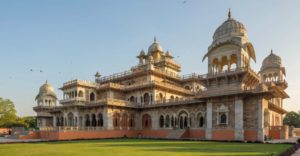
Rudyard Kipling was so impressed by this museum and its architecture that he wrote “it is now a rebuke to all other museums in India from Calcutta downwards”. The foundation stone was laid by the Prince of Wales, Albert Edward during his visit to Jaipur in 1876. In 1880 Maharaja Sawai Madho Singh II accepted a request by Dr. Thomas H. Hendley, Resident Surgeon to open a museum of Industrial Arts to display products of local craftsmen. The Albert Hall was completed in 1887 by the architect Samuel Swinton Jacob, Director of Jaipur PWD. Its Indo-Saracenic architecture and stone ornamentation became a model of a blending of classical Indian styles of design from Mughal to Rajput. Even the corridors were decorated with murals in a variety of styles and civilizations to enable the people of the region to compare and contrast them with their own, inspiring artisans to improve their skills and develop traditional arts.
Vice Regal lodge/ Rashtrapati Niwas in Shimla
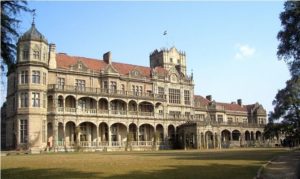
Troubled by the heat of the Indian subcontinent, the British chose the cooler hill station Shimla to be their summer capital. The Viceregal Lodge was the British Viceroy’s home from 1888 to 1946, almost to the time of Indian Independence. The house was designed by Henry Irwin who is also known for having designed the Mysore Palace. The Viceroy of India, Lord Dufferin was its first occupant. Henry Irwin’s grand, elaborate Mock-Tudor stately home in grey and light blue limestone is surrounded by beautiful gardens. Today it is used by the Ministry of Education as the Indian Institute of Advanced Studies.
Victoria Memorial in Calcutta
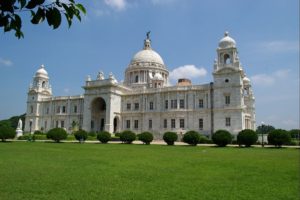
The Victoria Memorial Hall in Kolkata, West Bengal, built to honor Queen Victoria is today a fine art museum which evokes the grandeur of the British Raj in India. Its foundation stone was laid in 1906 by King George V, the Prince of Wales at the time. Designed by William Emerson, the president of the Royal Institute of British Architects, the monument is a beautiful and classic amalgamation of British and Mughal elements. The memorial also houses beautiful gardens which are spread over an area of 64 acres.
St. Paul’s Cathedral
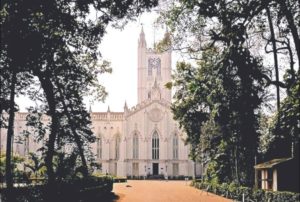
St Paul’s Cathedral, Kolkata, is the first Anglican cathedral of the Victorian age in India. Its architect is William Nairn Forbes with C. K. Robinson, who was one of the Magistrates of Calcutta. Forbes, trained by the East India Company’s military school was considered a versatile genius in architecture and undertook the project at the request of Bishop Daniel Wilson of Calcutta. The first stone was laid in 1839, and the building was completed in 1847. It has been termed “the original metropolitan church of British India”. St.Paul’s style is considered English Perpendicular Gothic. The cathedral lost its original steeple, as a result of an earthquake, and had to be redesigned later. Today the cathedral of the Church of North India welcomes visitors from everywhere.
Indian Museum
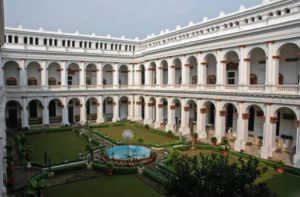
Founded in 1814 by the Asiatic Society of Bengal the Indian Museum is the earliest and the largest multipurpose Museum in the Asia-Pacific region. In 1875, the present building of the Indian Museum on Chowringhee, designed by W. L. Grandville was completed. It opened to the public with two galleries in April 1878. The museum known in its inception as the “Asiatic Society Museum”, later was called the “Imperial Museum” and is now the “Indian Museum”. It’s also called Jadughar or Ajabghar meaning Magic House. One of the earliest endeavors to preserve the art and culture of India, the building and institution are a part of the legacy of the British Raj.
St.John’s church
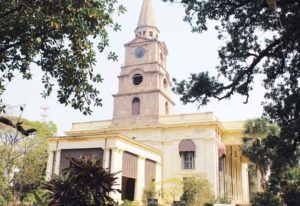
St. John’s Church, was among the first public buildings built by the East India Company after Kolkata became the effective capital of British India. Construction started in 1784 and was completed in 1787. Built in the Neoclassical architectural style, it has a stone spire 174 ft tall as its most distinctive feature. St. John’s Church is the third oldest church in Calcutta (Kolkata) only next to the Armenian and the Old Mission Church. The land for the St. John’s Church was donated by the Maharaja Nabo Kishen Bahadur and the foundation stone was laid by Warren Hastings, India’s first British Governor General, in 1784. Built by architect James Agg using stone which was a rare material in the late 18th century Kolkata. The stones came from the medieval ruins of Gour, and were shipped down the Hooghly River. There are several other churches from the British era in Kolkata.
High Court Calcutta
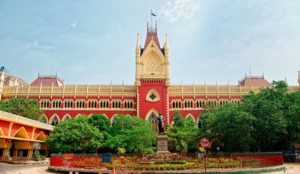
An imposing Gothic building, designed by Walter Granville’s in 1872, on Esplanade Row, Kolkata, its style is quite different from the other neoclassical buildings in the area. Built with red brick and sandstone with stucco finishing, it is the oldest High Court in India, established during Her Majesty Queen Victoria’s time.
B.B.D. Bagh/ Dalhousie Square in Calcutta with its many historical landmarks has some of the best remnants of British colonial architecture in the world. Unfortunately years of neglect and lack of funding has put many structures in peril in a city once even considered the finest in Asia. The old fort built by the British was near where the General Post Office in Calcutta today stands. The imposing structure of the Post Office was designed by Walter B. Grenville in 1864 and completed in 1868.
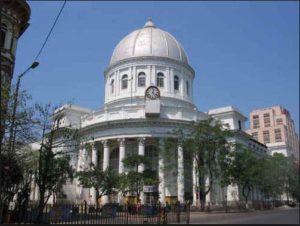
Rashtrapati Bhavan
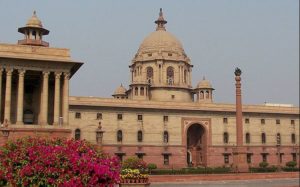
Viceroy’s House, now Rashtrapati Bhavan, was planned when the British decided to move the capital of India from Calcutta to Delhi. It represents the high point of its architect Edwin Lutyens brilliant career as an architect. He started designing it in 1912, and the Viceroy and Lady Irwin moved in December 1929. The culmination of a long quest to achieve a perfect amalgamation of Western and Eastern architectural styles, this is also the grandest and largest of all the residences that the British built in India. Lutyens’ new headquarters for a brand new capital had 340 rooms, covered four and a half acres and included twelve separate internal courtyards. It was meant to make a clear statement of British imperial intentions. But time and history had other plans for India. Today it is the official home of the President of India and the symbol of the largest democracy in the world.
British architect Edwin Lutyen and Mr.Herbert Baker designed most of the structures that formed the new capital of New Delhi along Rajpath and Janpath. An incredible opportunity to design a city from the ground up they designed a long axis along the Raisina Hill known as the King’s Way, now called Rajpath, with the India Gate on one side and the magnificent Viceroy’s house on the other end. Today, the Rajpath showcases India’s military and democratic might during the Republic day parade. Janpath was originally called Queen’s Way.
The “Jewel in the Crown” as she was called – India of the British empire, even today invokes nostalgia of a bygone era, enchanting many a tourist and history aficionado. The arguments over British legacy on both sides will remain but I hope the beautiful structures of that era are preserved for posterity.
A Worthy Thought
“Do not let any unwholesome talk come out of your mouths, but only what is helpful for building others up according to their needs, that it may benefit those who listen.” Ephesians 4:29
Alison
Really enjoyed reading your commentary & seeing the photos – I love India and have visited over 20 times – and am interested in the Raj era of Indian history in particular.
Ann
Thank you Alison. That’s awesome that you were able to go to India so many times. For many visitors India feels overwhelming and exhausting so it’s good to hear that there are folks like you too who can handle it.
The Untourists
Incredible, isnt it? I have grown up in Calcutta in awe of this fabulous architecture. We need to talk about it more so there can be a movement to preserve it. What’s happening to a lot of these old buildings is very sad now…
Ann
Yes, I hear that the condition inside some of these buildings is pretty bad. Sadly many historic structures in India are deteriorating. Wish the Ambanis and rich industrialists would do something to help instead of selfishly accumulating untold wealth for themselves. Mukesh Ambani’s Antilia cost 1 billion US dollars and is the ugliest building ever in my opinion. It is the single most expensive personal home – 27 floors for one family. But such is the irony of India.